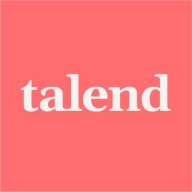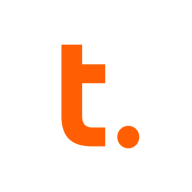

Talend Data Management Platform and Teradata compete in the data integration and management sector. Talend appears to have the upper hand due to its user-friendly interface, cost-effective licensing model, and strong ROI.
Features: Talend offers real-time data integration, centralized metadata sharing, and a broad range of connectors, making it versatile for various data tasks. It supports cloud deployment and has a user-friendly interface. Teradata is known for its parallel processing capabilities, in-database analytics, and robust architecture, excelling in complex queries and scalability.
Room for Improvement: Talend could enhance installation processes, multitasking, and SAP connections, alongside better support and documentation. Teradata faces challenges like high costs, complex user interface, and limited support for cloud and unstructured data, requiring better cloud integration and cost reduction.
Ease of Deployment and Customer Service: Talend is praised for its straightforward deployment across various environments, with average technical support but a supportive community. Teradata's deployment is considered complex, despite its hybrid and cloud options, and users expect more responsive technical support.
Pricing and ROI: Talend offers a cost-effective solution with flexible licensing, which suits smaller setups and provides strong ROI quickly. In contrast, Teradata is expensive but valued by large enterprises for its performance, offering long-term savings through reduced staffing needs.
We actually achieved the first 18 months worth of work in the first six months.
At least fifteen to twenty percent of our time has been saved using Teradata, which has positively affected team productivity and business outcomes.
We have realized a return on investment, with a reduction of staff from 27 to eight, and our current return on investment is approximately 14%.
The customer support for Teradata has been great.
Customer support is very good, rated eight out of ten under our essential agreement.
The technical support from Teradata is quite advanced.
Whenever we need more resources, we can add that in Teradata, and when not needed, we can scale it down as well.
This expansion can occur without incurring downtime or taking systems offline.
Scalability is complex as you need to purchase a license and coordinate with Teradata for additional disk space and CPU.
We have not encountered many issues with remote engines, and the interfaces are properly developed.
The workload management and software maturity provide a reliable system.
I find the stability to be almost a ten out of ten.
On the flip side, that is one of its amazing strengths, as you are not locked into a very rigid way of doing something.
Data management could also encompass APIs and real-time streaming data integration.
If the same thing were available in a web interface, that would be really helpful.
If Teradata could provide a list of certified experts, that would be fantastic.
Unlike SQL and Oracle, which have in-built replication capabilities, we don't have similar functionality with Teradata.
Teradata is much more expensive than SQL, which is well-performed and cheaper.
Initially, it may seem expensive compared to similar cloud databases, however, it offers significant value in performance, stability, and overall output once in use.
We spent roughly $295,000 on setup costs.
Having access to Talend support directly from TNC proved quite beneficial.
Teradata's security helps our organization meet compliance requirements such as GDPR and IFRS, and it is particularly essential for revenue contracting or revenue recognition.
The first thing that I appreciate about Teradata is its multi-parallel processing. Whatever queries we execute on Teradata, they are blazingly fast, so it offers really fast connectivity.
The data mover is valuable over the last two years as it allows us to achieve data replication to our disaster recovery systems.
| Product | Market Share (%) |
|---|---|
| Teradata | 0.9% |
| Talend Data Management Platform | 1.1% |
| Other | 98.0% |


| Company Size | Count |
|---|---|
| Small Business | 9 |
| Midsize Enterprise | 5 |
| Large Enterprise | 8 |
| Company Size | Count |
|---|---|
| Small Business | 26 |
| Midsize Enterprise | 12 |
| Large Enterprise | 50 |
Teradata is a powerful tool for handling substantial data volumes with its parallel processing architecture, supporting both cloud and on-premise environments efficiently. It offers impressive capabilities for fast query processing, data integration, and real-time reporting, making it suitable for diverse industrial applications.
Known for its robust parallel processing capabilities, Teradata effectively manages large datasets and provides adaptable deployment across cloud and on-premise setups. It enhances performance and scalability with features like advanced query tuning, workload management, and strong security. Users appreciate its ease of use and automation features which support real-time data reporting. The optimizer and intelligent partitioning help improve query speed and efficiency, while multi-temperature data management optimizes data handling.
What are the key features of Teradata?In the finance, retail, and government sectors, Teradata is employed for data warehousing, business intelligence, and analytical processing. It handles vast datasets for activities like customer behavior modeling and enterprise data integration. Supporting efficient reporting and analytics, Teradata enhances data storage and processing, whether deployed on-premise or on cloud platforms.
We monitor all Data Integration reviews to prevent fraudulent reviews and keep review quality high. We do not post reviews by company employees or direct competitors. We validate each review for authenticity via cross-reference with LinkedIn, and personal follow-up with the reviewer when necessary.